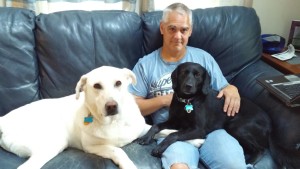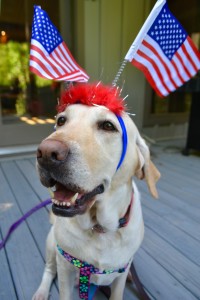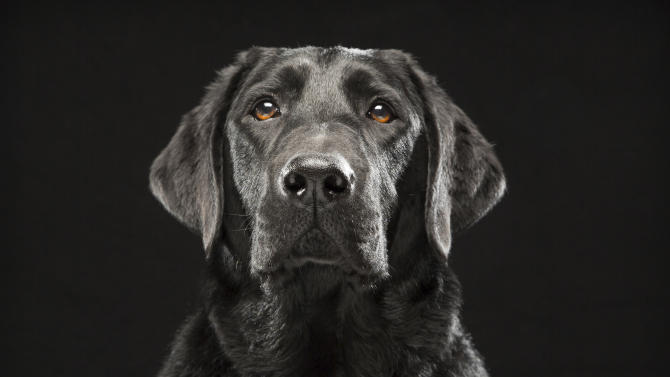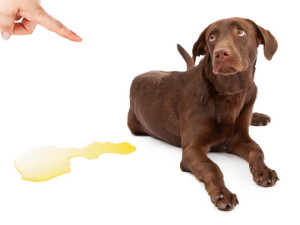
Hi. My name is Gatsby. I wanted to give my dog and people friends out there an update to my doggie life story. It’s been a little over a year since I landed in my forever home, and boy am I a happy dog. I want to start from the beginning, since everyone might not know my story.
I am a cheerful, 85 lb. yellow lab mix who had a rough go of it the first few years of my life. I was rescued from a shelter in early 2014, after they didn’t feed me very well. I had some complications from that, which included nerve damage in my back left leg that resulted in me losing my leg in May 2014. The doctors at Peachtree Hills Animal Hospital took great care of me and I had great foster parents named Heather and Stacy during that awful time. Without them and the ALR family, there is no telling what would have happened to me.
In June 2014, I was told that I was going to a forever home. I was hoping that would be the last time I would be shuffled around. No dog likes that. Anyway, I was dropped off at Sutton & Kristi’s house on June 11 by one of my foster moms, Heather. I got out of the car and jumped into Sutton’s lap hoping that he would be my forever dad. I found out soon that Sutton & Kristi had lost their yellow lab Aspen to cancer in May, so I was hoping I could fill that void and be a really good fit for them.
The first week, Dad stayed home quite a bit to make sure I was OK with the new house and all the surroundings. He would leave me longer and longer by myself so I could get use to having the house to myself. I also showed my new owners my love for shoes. Yes, shoes. I don’t know what it is, but I love taking shoes from wherever they are to my bed in the living room. I’ve been known to hoard a dozen shoes, all within paw distance to my bed. I also like taking them places where you can’t find them. I get them from the closet, off the coffee table, off the floor, wherever I can find them.
I also had to learn the ins and outs about my new house. They had a doggie door, which was cool, but I had to learn how to use it. With 3 legs, it was a little bit of a challenge to negotiate the door smacking my butt, because I was a little slow at first. But, I figured it out. Also, my new owners got me in shape really fast. You see, when I go out the dog door, I have to go around the house and down the stairs to the fairly steep driveway down to the fenced in backyard. It’s a nice backyard, with plenty of places to explore. The first time I went down, I thought it was pretty cool. Then, when I was done, I was like ‘Uh Oh.’, I have to go back up that driveway, and up those stairs. Boy, that was really tough. I can do it pretty well now, but I try and hold it as long as I can, because I prefer the easier way which is when Mom or Dad let me out front to go potty.
At first, I was a little lonely, because Mom & Dad both work. I had to get used to being alone for longer periods, but I had the dog door, so I could go out anytime I wanted. It really worked out well in the beginning, because I also had heartworm. The downtime and quiet during the day helped during the long month of medicine and shots. I am happy to report that I am now heartworm free. Yay…
I finally got used to being alone during the day, and it wasn’t too bad. When Dad gets home, he plays with me for a long time. He really likes dogs, and I don’t mind at all playing and being on the end of a tummy and back rub. Dad also takes me to work on Fridays once a month, since he only works 1/2 day. I really like that. I go from office to office saying hi to everyone in the building. I like to show everyone how I am doing and how happy I am. After seeing everyone, Dad takes me back to his office and I just lie down for a couple of hours and just enjoy being out and about.
In November, I got an unexpected ‘visitor’. Well, I thought it was a visitor. My Dad brought home a 2nd dog. They called her America. I heard mention of Mom & Dad being fosters, so I breathed a sigh of relief. I was their main dog now, and was enjoying being the center of attention immensely. America came in with her tail between her legs, and I was OK with that, because I had to show her that I was boss around here. We got along pretty well, and we had some early skirmishes, but I really still wanted to be the only dog. Before Christmas, Mom & Dad took America to an adoption and then to a potential foster’s home. I thought to myself ‘Finally back to normalcy’. But, America came back. I heard she didn’t like other dogs and was quite aggressive when around other dogs. Funny, she never did that to me. Maybe she just knew who she was dealing with! Anyway, she was great around people and loved kids like I do, but she just kept hanging around. And Mom & Dad started showing a little favor towards her. I was starting to get a bad feeling.
The first real sign of trouble was when America was invited to go up to PA to visit my new grandma and the rest of Mom’s family. I was like ‘Whaaattt??’. How am I and this new mutt going to get along for 12 hours up and back cooped up in the back of an SUV. Granted it had plenty of room, but still what did I do to deserve this? Well, we made it up to PA and it wasn’t bad. We were really good and didn’t cause too much trouble. America did like crawling all over the car, so she was a little annoying.
Up in PA, I really liked Grandma. The family thought both of us were good dogs and I could sense that everyone wanted Mom & Dad to keep America. She was also starting to be really cuddly toward Mom & Dad as I think she began to think this fostering experiment was a failure. Turns out I was right.
When we got back to GA, the deal was sealed and America became part of our family. She is a very good dog, but I didn’t like the idea of having to split the doggie fun with her. Now Dad has double duty when he gets home. But, he does pretty well at it. Thankfully, America and Mom share time together so I might get a little more time with Dad.
Currently, I weigh about 85 lbs and feel great and get around quite well. I got up to 89 lbs. and Mom & Dad were not happy. Mom blamed Dad for giving me too many treats (he’s good at that), but I kept my mouth shut. I’ve lost back down to 85, and I feel much better. I think they want me down to 82, because they feel that would be better for my joints.
Overall, America and I get along very well and I like my Mom and Dad. I actually enjoy having another dog around during the day. I still would like to get more attention, but hey I guess fair is fair.
I can only hope that all you dogs out there looking for a good home can find one. And, all you dog-loving humans out there, please consider one of us less fortunate dogs when you go looking for one. We will really appreciate it and will give you more loving than you can imagine.
Love to all my ALR friends.
Gatsby
Comments
Post Date
July 8, 2015













